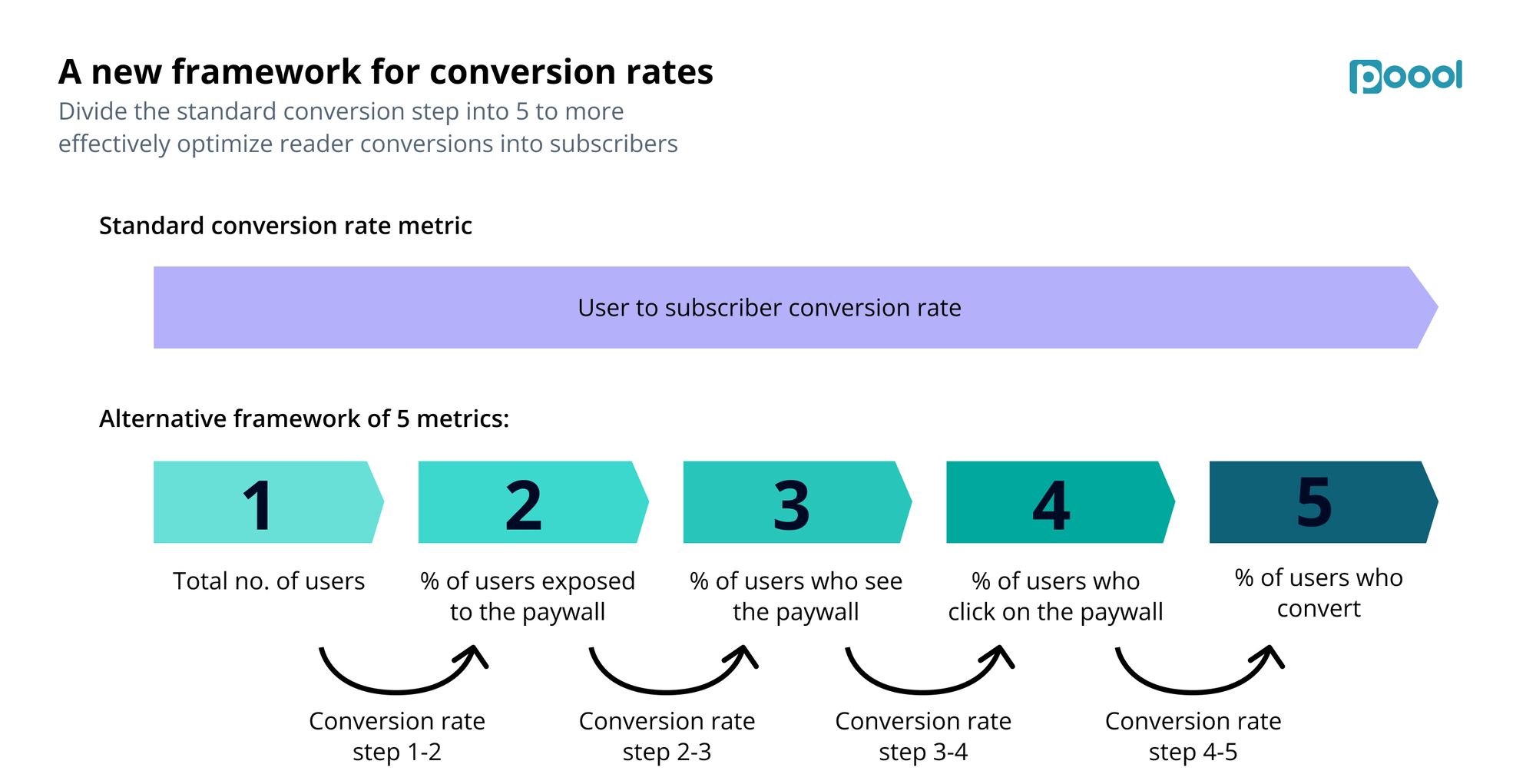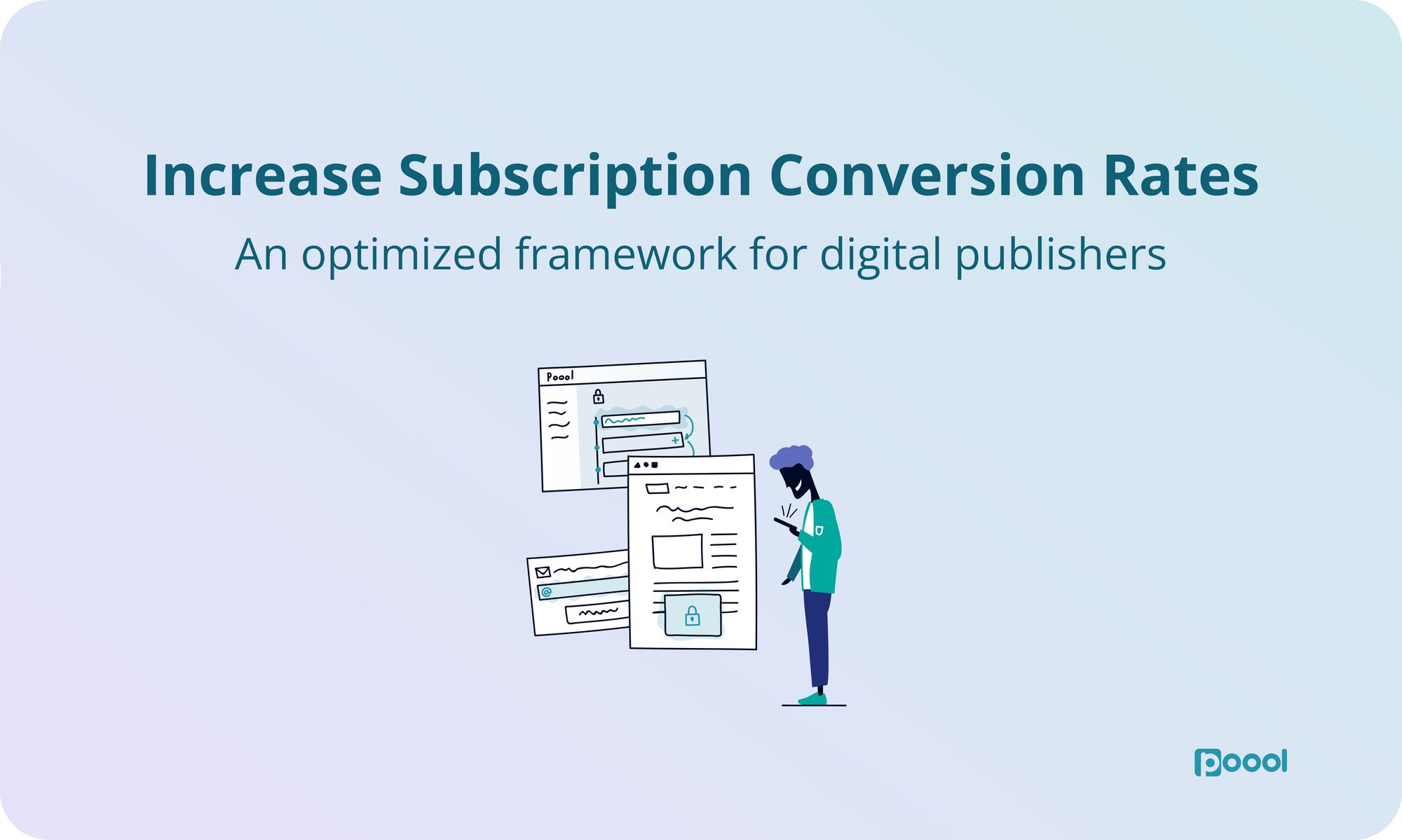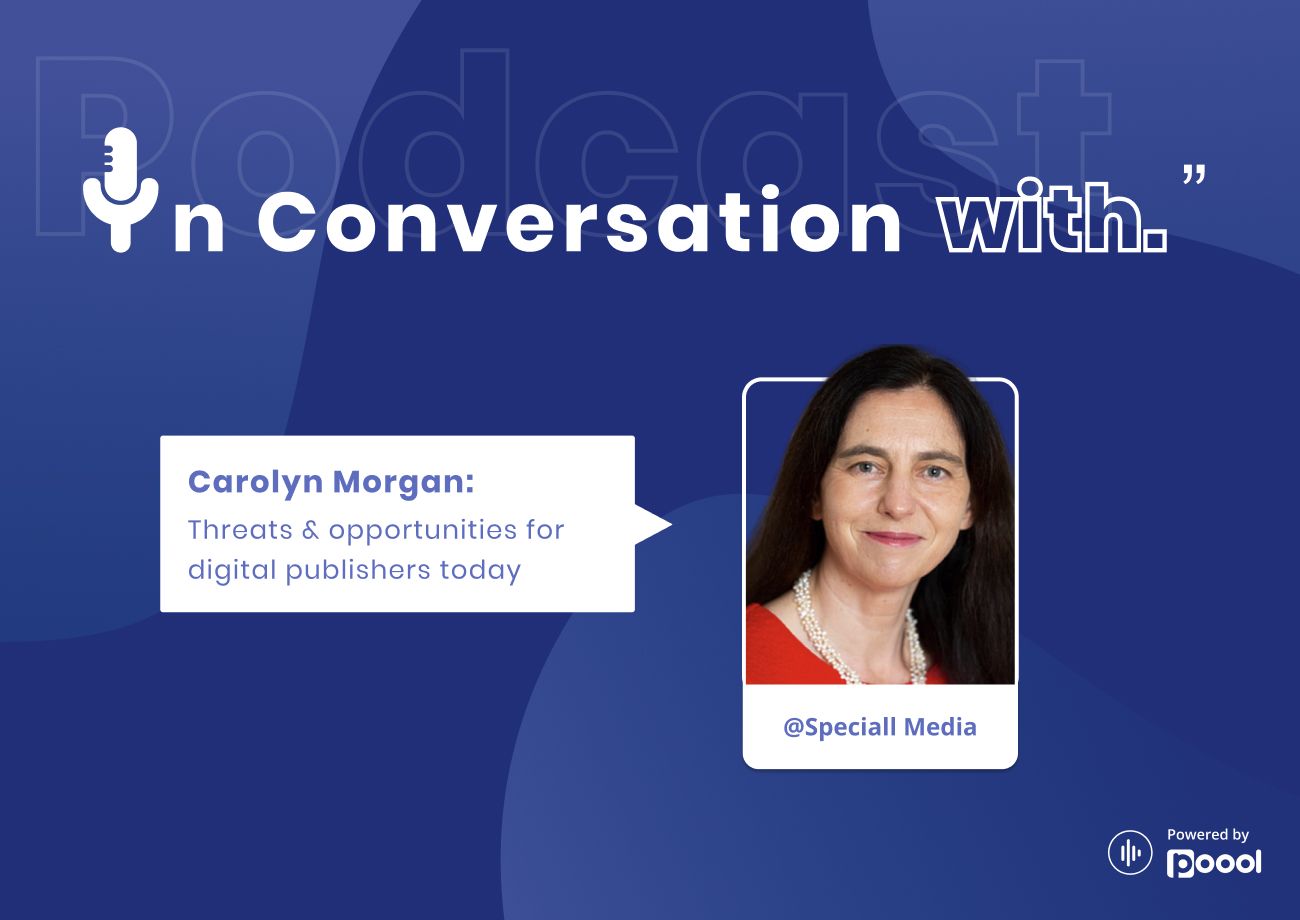Originally sent in July 2022. Sign up to our ex-newsletter here.
For the attentive readers among you, you’ll have noticed a slight change of branding for our "ex"-newsletter.
What started as a way of sharing the latest Poool content and updates has turned into a publication of itself, a thought-leadership digest full of insights and expertise over ‘news’. Hence the change of name! But it’s still me (Madeleine) behind the screen and the same goal of helping publishers like you to better monetize your audience.
Aside from this ironic start of sharing news in our "ex"-newsletter (whoops), let’s dig into the valuable stuff!
- Max, Poool's CEO, shares our optimized conversion funnel framework
- Insights from the experts and our take on the matter
- What we’ve been reading the past month
- How to optimize paywall conversion rates on mobile
- A final note for making the most of summer to improve your strategy
Our revised conversion funnel framework
Tracking conversion rate as a single metric was originally designed for the e-commerce industry, where buying processes are more about intuitive decision-making than developing engagement and building strong relationships.
Of course, the inverse is true for digital publishers. Despite this, conversion rate still reigns as one of the central north star metrics... which doesn’t really make sense.
If converting users into subscribers for publishers is all about gradually developing engagement throughout the user journey, why are we focusing on a single metric alone, one that only considers the paywall itself?
In short, we shouldn’t! This really isn’t optimal for publishers. Hence why we’ve developed a revised framework, made up of 5 steps, starting with all users who visit your site and working through the funnel towards the paywall.

There are two main advantages of using this model over the traditional conversion rate:
- It highlights the value of strategies employed prior to the paywall, encouraging optimizations to be made at every step. For instance, you should increase the visibility of your premium offers (step 2) to move more users through to the next stage of the funnel
- By making incremental improvements at each step, even by just 10%, these will culminate into a significant increase in overall user-to-subscriber conversion rates
Find the full details of each step, benchmark conversion rates and how to increase the percentage of users moving to the next step in the funnel in our white paper on the blog!

Insights from the experts and our take
A collection of insightful quotes from industry experts, adding in our view on the matter!
Tara Lajumoke, FT Strategies, speaking at Newsrewired conference in London:
"Every strategy must be underpinned by a rich understanding of your audience - who they are, why they are here, what content they value, what platforms and channels they like to use to consume that content”
Our take: publishers are becoming increasingly data driven, which is essential for a successful reader revenue strategy. The question, though, comes down to how you can collect this data. We’d recommend a registration strategy for collecting first-party data and interactional engagement formats (such as quizzes and questionnaires) to gather zero-party data
Carolyn Morgan, consultant and founder of Speciall Media, in our podcast:
“You need to understand the balance of where the money is - how big is your ‘enthusiastic reader’ segment, how big are your advertiser demands - and you might balance the free vs paid accordingly”
Our take: there’s been a lot of talk recently about advertising vs subscription, but in fact the two can work perfectly well together. Specifically, ads help you monetize your more volatile audience, whilst subscription provides stability in establishing a recurring, predictable revenue stream from your most engaged users. As Carolyn highlights, it’s about finding the ratio that’s best suited to your business model and revenue potential, as well as diversifying revenue, allowing for audience acquisition and meeting a wider range of audience needs.
Catch the full podcast episode and summary here:

Jessanne Collins, The New Yorker’s director of newsletters, speaking to Digiday:
“We know how powerful the newsletter is in terms of having that direct relationship to the reader…(which) translates directly to a subscriber business model... At the core, we are looking to drive subscriptions and we have data that says that newsletter readers are much more likely to go on that journey to become subscribers.”
Our take: newsletters are undeniably valuable in any publisher’s business model, ultimately increasing frequency of content consumption and engagement which have a direct impact on your revenues.
But, how do you track the performance of your newsletters?
Our recommendation is to forget click-through rates and instead focus on open rates, encouraging engagement within the reader’s inbox. Why? Because a model that seeks clicks isn’t going to result in a relatable, relationship-building newsletter. The time of click-baiting has passed, it’s now time for developing strong, personal connections with your audience!
What we've been reading
- An optimistic outlook for publishers, in 7 charts by Twipe, taken from WAN-IFRA’s trend press report 2021-22
- How well-moderated comments provide rich audience insights to publishers - Digiday sharing a valuable data collection technique and, on the same topic, I’d also recommend listening to Alex White, MD at Immediate Media, on the Inpublishing podcast where she discusses how the BBC Food Facebook group has been useful for informing their strategy
- The Essential Engagement KPIs for Optimizing Conversion Rates: our white paper in collaboration with Chartbeat where we delve into the importance of developing an effective audience engagement strategy, a pivotal step on the road towards revenue goals, sharing KPIs, benchmarks and actionable advice.

How to optimize paywall conversion rates on mobile
There’s a trend amongst publishers where conversion rates on mobile devices are significantly lower than on desktop. But, conversely, mobile users are making up an increasingly larger percentage of overall traffic.
How can we improve conversion rates on mobile devices?
As highlighted at the start of this email, a lot more goes into conversions than just the paywall, including developing engagement from the moment a user visits your site. You can therefore work on engagement strategies specific to mobile devices, such as push notifications, easy social sharing and apps, as well as improve the user experience to make it easier for users to stay onsite/consume content for longer.
But, of course the paywall also plays an important role.
Le Petit Journal fully understood this, choosing to create a "mobile-users" audience segment and design an adapted paywall.
On the left, their original wall for mobile users, which led to conversion rates increasing by 200%! The yellow wall on the right is their current design.

What makes a paywall more mobile-friendly?
- Less text, more brevity, but make sure to forefront your value proposition
- Remove distractions - attention is hard to grab on mobiles
- Bold CTA button - the centerpiece of your wall
- On the blue wall, emphasis is placed on ‘speed and ease’ of subscribing in ‘just a few steps’, ensuring that readers are aware of how simple it is to convert
- In their new wall, the subscription offers are on the wall itself, reducing a click and step in the conversion funnel, something that’s proven to increase CTR
A final note: summer has almost arrived which, for most publishers, means a fall in audiences as books on the beach replace screens on the commute to work. But this isn't the end of the world - no, it's actually your time to regroup and work on optimizing your strategy ready for the return to work in September. Our advice - A/B test, analyze, optimize, repeat (that's how the Fatboy slim song goes, right?)
How about a little expert support in doing this? We're here to help! Book a meeting and quote 'Newsletter free audit' in the comments to get a free website audit from our team!
See you next month,
Madeleine


